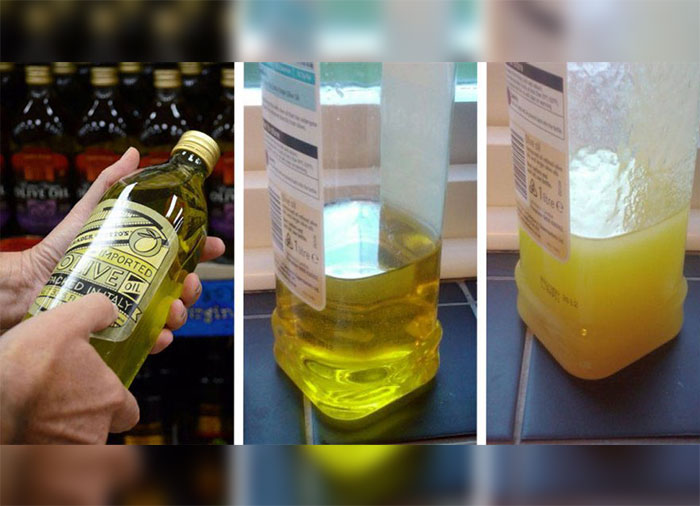Love Matters & Lifestyle

- Super User
- Category: Love & Lifestyle
- Sunday, 04 September 2016 15:41
How to spot fake olive oil from a mile away...
We’ve known for years the benefits of the Mediterranean diet: cardiovascular health and regulation of blood sugar and cholesterol. A major component of the Mediterranean diet is monounsaturated fats—particularly olive oil.
In these times of questionable truth in advertising, resistance to transparency on food labels, and the vast variety of choices readily available, it’s very difficult for the consumer to make educated decisions when it comes to the products we buy. Even something as simple and basic as nutritious olive oil can be manipulated and misleading.
Research at the University of California found that over two thirds of the olive oil sold in the United States is not pure olive oil.
Olive oil is a healthy fat, as opposed to trans fats which are not. Olive oil reduces inflammation in the body and regulates hypertension, significantly reducing the risk of stroke and promoting heart health. It has also been shown to have a protective effect from depression and mental illness—the brain thrives on healthy fats. The glycoside oleuropin in olive oil has been found to prevent certain cancers and prevent bone cell loss found with osteoporosis.
Canola oil, in contrast, is not a naturally-occurring oil: it is manufactured from rapeseed oil and distilled with petroleum compounds (now that’s cooking with gas!). Heating canola oil releases carcinogens that are absorbed by whatever you’re cooking. Corn oil is made from genetically-modified corn.
Fake olive oil contains cheaper oils like canola and sunflower; a colorant is sometimes added to give the oils a greenish hue.
So how can you tell if the “olive oil” you bought is all olive? That’s the tough part.
Makers of diluted olive oil have their craft down to a science. Food experts are often unable to tell the difference between fake and pure olive oils based on taste alone. And we know you can’t rely on the label. Research published in the Swiss journal Sensors into the use of a multi-sensor platform called “BIONOTE” to test olive oil authenticity had positive results and is less expensive to employ than other technologies but is still not for consumers’ use. From the Introduction:
“The high price of olive oil and its increased popularity as a potential health food have made it an ideal target for frauds. Common olive oil adulterations include accidental contaminations during production stages, deliberate mislabeling of less expensive oil categories and, more often, the admixtures of expensive olive oils with low quality oils. Although advances in knowledge and technology have undoubtedly led to greater success over frauds, even more complex forms of adulteration have been developed to invalidate the usefulness of official methods, thus leaving the authenticity verification still an unsolved matter.”
Scientific testing in your kitchen is obviously impractical.
The following are a few tips to find out if you’ve got the real thing.
1. Chill It – monounsaturated fats like olive oil will become cloudy when cold. If your oil remains clear after a couple hours in the refrigerator, it’s not pure olive. This is not a slam dunk, however: some oils labelled “olive” have just enough in it to pass this test but contain other oil constituents.
Locally Source It – while this isn’t practical for most, if you live in a region in which olive oil is actually made, chances are pretty good it’ll be pure from the source. Local farmers’ markets and specialty stores may carry regional products.
2. Price It – pure olive oil costs more than fake (the difference in price is decidedly worth it when you consider the health impacts). If it costs less than $10 a liter/quart, it’s not pure olive oil.
3. Read It – check the label for a seal of approval from The International Olive Oil Council (IOOC) or the California Olive Oil Council (COOC). IOOC has published testing methods to determine if there are extraneous oils combined with olive. If it’s not pure, it’s not certified. COOC regulates the marketing of California olive oils as extra virgin and from olives grown in California; we couldn’t find details as to whether it either would certify a producer who mixes other oils with olive but a seal lets you know that at least it’s extra virgin, which is the highest grade.
Other things to consider when buying olive oil:
1. Look for a harvest date on the label—fake oils usually won’t have one.
2. Only buy cold-pressed, extra virgin—heat not only detracts from the nutritional value but there are chemicals applied with heat extraction methods.
3. Do not buy “light” olive oil—it’s not pure. You want the fat, anyway!
4. Dark bottles prevent oxidation and prolong shelf life.
SOURCE: healthherbs365.com

















































































